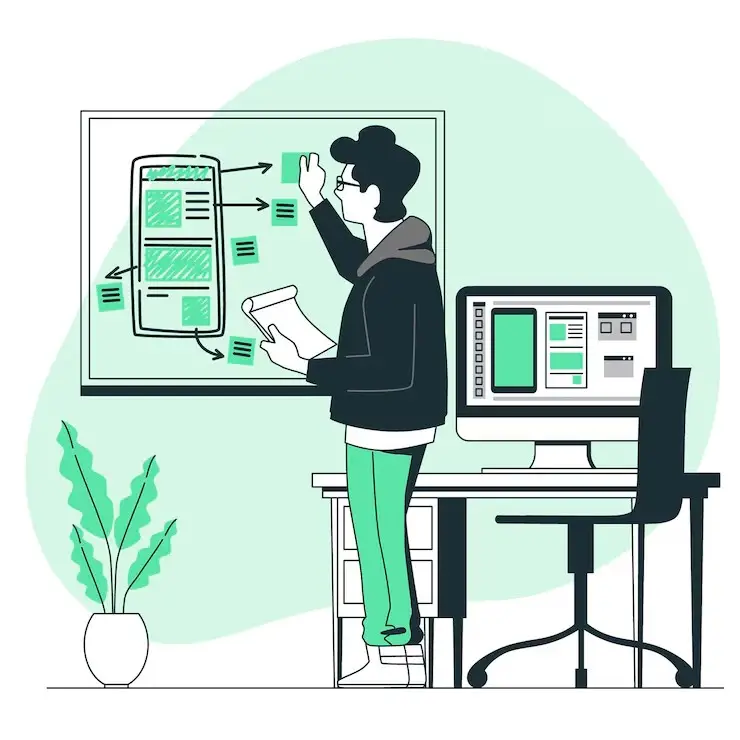
In the realm of web and mobile app development, two prominent technologies have been gaining significant attention: Laravel and Flutter. They have different roles, and knowing they have their own strengths and weaknesses can help developers and companies do a good evaluation of the respective platforms. Here, in this detailed and weighty comparison, we are going to outline the main things Laravel and Flutter have in common as well as what they are different in.
Understanding Laravel and Flutter
– Laravel:
Developed by Taylor Otwell in 2011, Laravel is a PHP framework that has grown very popular thanks to its eloquent syntax and rich functionality. It decreases web development complexity because it provides a variety of tools for the development of scalable and secure web applications. Laravel development services are becoming more and more in demand because of their developer-friendly characteristics and their ever-growing community support.
– Flutter:
In 2017, Flutter, an open-source software development kit created by Google, had a meteoric rise as an efficient cross-platform framework for creating natively compiled applications for mobile, web, and desktop platforms from the same codebase. Being based on the best of the Dart ecosystem, Flutter development services are known for their short development cycles, expressive UI, and native performance across platforms.
Flutter Vs Laravel: A Complete Comparison
1. Development Approach
– Laravel:
As a backend framework, Laravel follows the Model-View-Controller architecture, thus keeping the logic and presentation layers cleanly separated. It enables developers to easily get RESTful APIs, work with databases easily using Eloquent ORM, and handle authentication effortlessly by using integrated functionalities.
– Flutter:
Flutter follows a different path, providing an all-encompassing structure with the widget-based architecture built in. Developers can produce beautiful interfaces by making use of Flutter’s wide collection of widgets and its hot reload feature, which provides a chance for real-time updates during the development phase.
2. Performance and Speed
– Laravel:
With Laravel being server-side, performance depends on the server settings, optimum database configuration, and code optimization. The cache mechanism, along with the various optimization techniques, will not only enhance the speed of the Laravel app but ensure scalability as well.
– Flutter:
Flutter achieves performance excellence by being compiled, therefore, the program does not need interpreters or virtual machines at runtime. This subsequently helps speed up the application, reduces the lag in animation, and delivers a consistently great output across the different platforms.
3. Adaptability and Personalization
– Laravel:
Its flexible structure and utilization of Composer packages offer developers great versatility. Developers have the option to utilize packages, plugins, and APIs to expand the advantages of the framework, allowing for the customization of a system tailored to the requirements of their projects.
– Flutter:
It provides a range of customizable widgets and plugins for UI development, enabling the quick creation of unique UI elements and the integration of platform-specific features. Because of its widget-based development, the framework is simplified and allows for easy integration of various components.
4. Aspects of Ecosystems and Integration
– Laravel:
It is capable of seamlessly working with various databases like MySQL, PostgreSQL, and SQLite due to its well-developed ecosystem. It provides support for caching technologies such as Redis and Memcached to manage large amounts of data inputs. It smoothly combines with frontend libraries such as Vue.js and React for simplified UI interactions.
– Flutter:
With the rapid growth of the Flutter ecosystem, its library is constantly growing with plugins and packages available for various functions like networking, state management, and database operations. It seamlessly integrates with Firebase for backend services and offers native platform APIs for utilizing device functionalities and connecting with popular IDEs such as Android Studio and Visual Studio Code.
5. Use Cases and Industry Adoption
– Laravel:
Laravel has become the first choice for the development of many web apps such as CMS, online stores, and enterprise solutions. The huge number of opportunities make it quite suitable for every area of application, starting with e-commerce, and continuing with healthcare, education, and finance.
– Flutter:
Flutter provides an easy-to-use package for cross-platform mobile apps, which not only enhances native performance but also makes it a perfect choice for startups, enterprises, and companies to cut costs and be efficient in app development. It is growing popular in various sectors, especially fintech, entertainment, travel, and productivity tools.
Conclusion
Laravel and Flutter are among the most popular technologies; however, each possesses different strengths and operates as a perfectly balanced option in various scenarios. Laravel stands out with PHP as a backend web development language, while Dart powers Flutter in the realm of cross-platform mobile app development. It is important that your team decides which one is needed based on project requirements, team expertise, performance goals, and scalability needs.
Conservatively, Laravel development services build robust web applications, while Flutter development services ensure fast and simple multifaceted mobile app development. Precisely, choosing the right technology stack requires considering factors like speed of development, performance, quality of community support, and scalability. Businesses can easily partner with a Laravel development agency or Flutter development firm for additional assistance.
